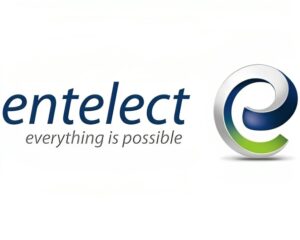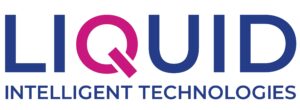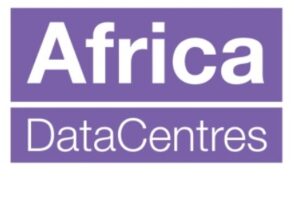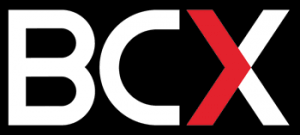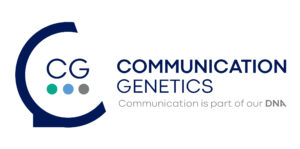Keyrus’s Stephen Coull says cost transparency enables fact-based decision making.
By Stephen Coull, Keyrus sales director
The shift of focus from traditional products to value-added services by many companies represents new challenges.
One of the challenges is an increasing difficulty in accurately understanding their costs, and the drivers of the costs. This is especially true in a shared services environment where a range of administrative and support services, such as IT, HR and financial services, are provided to the entire organisation.
One approach to understanding these costs is “cost transparency”, an approach designed to provide business, finance and shared service owners with detailed, meaningful insights into their respective areas. By gaining a clear understanding of the costs and volumes of their shared services product and service portfolios, enterprises can make fact-based strategic decisions regarding shared service investments.
Driving profitability and unlocking value through cost transparency
Cost transparency is designed to enable businesses to understand and attribute costs more accurately. It also enables those people responsible for specific areas of the business to understand which costs they are able to control, as well as which levers they can pull to effect changes in these.
According to Gartner, effective IT cost transparency is built on a foundation of six framework pillars, each of which plays a key role in creating the kind of transparency regarding costs that makes them significantly easier to understand and, therefore, control.
These six pillars, when implemented properly, will enable CIOs to run IT as a business and provide the financial transparency needed to optimise cost and value.
To truly understand cost transparency and the enormous value it offers to an organisation, it is worth taking a deeper dive into what makes up each of these six pillars, and how they are individually and collectively able to deliver value to the enterprise.
By taking a closer look at each of these, we can determine how IT can best deliver value to the enterprise.
1. IT budgeting
It is important to understand that budgets are a management tool used to allocate resources in order to achieve the enterprise’s objectives. As companies transform into digital businesses, there is a need to select, implement and manage IT more effectively. To achieve this, a multi-view approach to the IT budget is necessary.
In other words, managing costs in technology stacks requires both a technical view, which offers the ability to analyse and benchmark internal technology spend, as well as the calculation of the chargeback cost of IT business services.
At the same time, the business view needs costs organised in a way that clearly displays the cost of IT services in business terms. This enables business executives to easily link IT expenses with business needs.
Multiple budget views enable the holistic management of IT spend, allowing IT to take on a role as a business partner that can help the company in achieving its strategic goals, rather than being seen purely as a cost to the business. Moreover, it enables the IT budget to evolve from a cost tracker to a strategic tool, providing better alignment with the company’s goals.
2. Investment planning – effective project financial management
Effective project financial management is a process that brings together planning, budgeting, accounting, financial reporting, internal control, auditing, procurement, disbursement and the physical performance of the project. The overall aim is to be able to manage project resources properly and achieve the project’s objectives.
The best way to do this is to begin running IT as a business, by undertaking an investment-planning process that focuses on the entire life cycle of an IT investment, allowing costs to be effectively managed and value to be maximised.
At its core, effective financial management is an on-going process that features a cycle of good management habits, including planning, organising, directing, and controlling the financial activities – such as procurement – in a consistent, responsible manner. It also means applying general management principles to the financial resources of a project.
A crucial part of any project’s financial management is post-project evaluation. There need to be proper workshops and documentation on the outcomes of planned objectives. Once these are evaluated, the business will be in a much better position to learn from its mistakes and plan more effectively for future projects.
3. Chargeback, allocation and showback
Chargeback occurs when the requesting department receives an internal bill or “cross-charge” for the costs that are directly associated with the various services that they consume.
IT Showback consists of providing IT management, departments, and corporate management with an analysis of the IT costs due to each department, without actually cross-charging those costs. Both rely on an effective resource allocation methodology and tools to accurately assign costs to users of IT services.
When considering this pillar, it is crucial that the enterprise clarifies its charter and mandate, aligns its objectives with its business goals, and then selects the right approach for the business. In turn, the IT organisation must understand all the chargeback options that might apply and help the business units to understand these options.
4. Benchmarking IT costs
Benchmarking should be built into a chargeback or showback cost model to continually and passively evaluate key metrics and their trends over time,and generate critical insights. Benchmarking thus plays a key role in ensuring IT is spending the correct amount in the right areas.
Benchmarking is not about setting goals and trying to achieve them, but rather serves as an indication of what questions to ask and what insights one should understand about one’s own environment. When done correctly, benchmarking serves as a powerful tool to drive continued improvement within the business.
5. IT cost optimisation
This is something that CIOs have often tried to achieve, though they have seldom been able to articulate how effectively they have done this, nor how effective they have been in helping to optimise business costs.
Ingraining cost optimisation within the IT organisation’s DNA requires leadership and planning by CIOs. IT cost optimisation needs to be constantly practised, and CIOs should formulate a programme for cost optimisation by establishing a baseline of IT spending, identifying opportunities relative to peer-group benchmarks, developing a strategy to optimise, and executing that strategy, before finally tracking the benefits realised.
6. Demonstrating the business value of IT
CIOs must find a means of effectively communicating the understanding of the make-up of their IT costs and drivers, which has been learned through cost transparency. It is imperative that CIOs establish a common forum where finance, IT and business can come together to discuss IT spend, how it adds value to the business and how it aids in attaining the company’s objectives and strategies.
This can only be achieved if all stakeholders are speaking the same language. Armed with a cost transparency model and a common language, IT, business and finance find that they are more easily able to have productive, meaningful discussions.
Leveraging financial transparency
When leveraging the six pillars of IT financial transparency properly, CIOs are able to extend their reach far beyond the traditional focus of IT budgeting.
Increased demand for IT projects and services, coupled with the challenges that arise as organisations move to digital business models, have heightened the need for CIOs to do more than simply manage their IT budgets.
CIOs serious about making long-term changes to the financial side of their IT organisations need a framework to plan for these changes. The IT financial management framework can be used as an agent of cultural change for both IT staff and business stakeholders.
Benchmarking should be used when making any major changes to the enterprise, while effective measurement can be used to sustain these changes.
Cost transparency is a vital cog to ensure that CIOs achieve their plans, while providing clear and obvious value to the business, by aligning with its strategies and goals.




